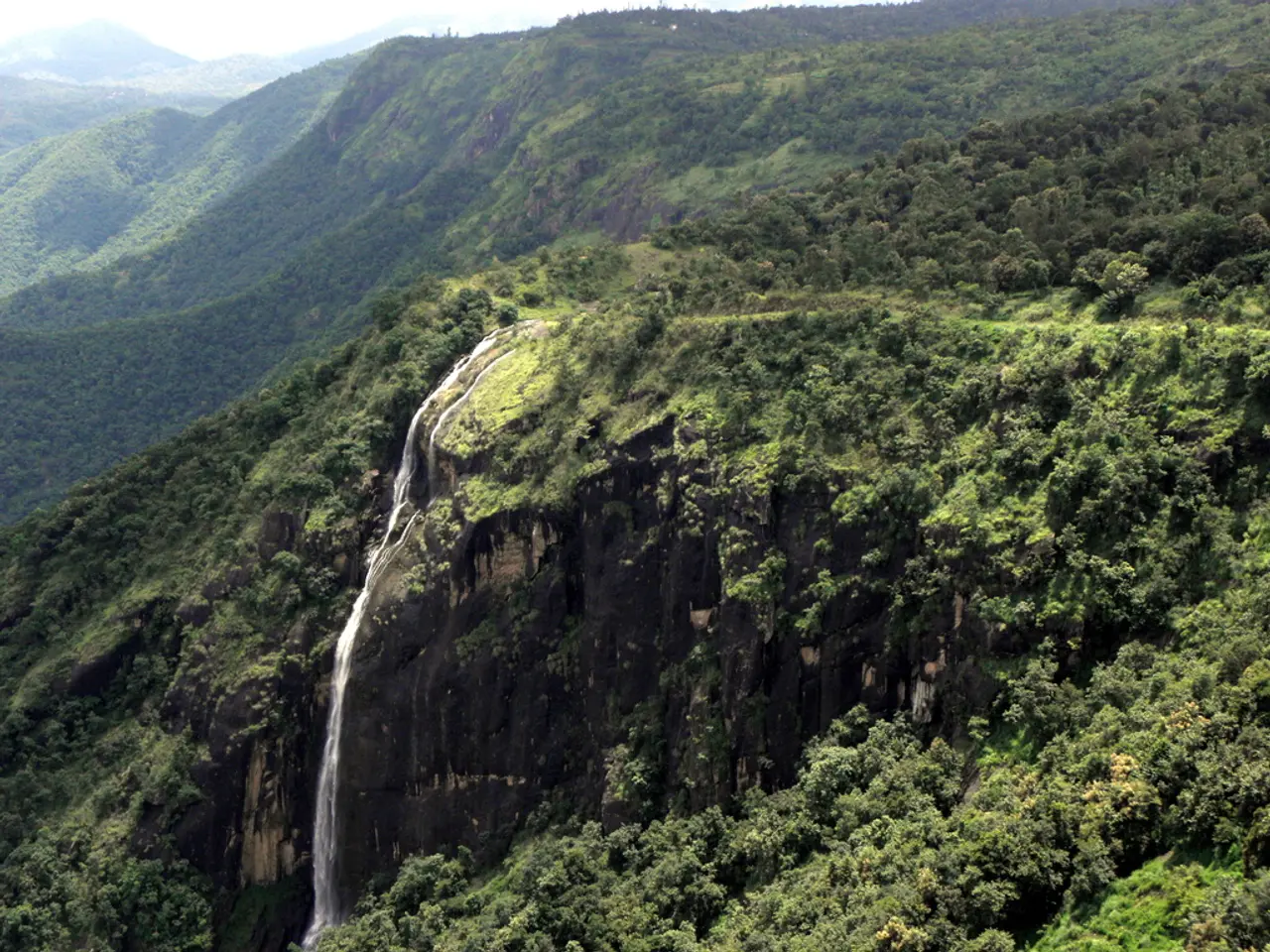Catastrophic damage in Himalayan town due to landslides.
In the heart of India's Himalayan region, the picturesque town of Dharali in Uttarakhand is grappling with the aftermath of a catastrophic landslide and flash floods. The disaster, triggered by a severe cloudburst on August 5, 2025, has left a trail of destruction, with over 50 people reported missing, four confirmed deaths, and around 190 rescued so far [1][3][4].
The root cause of the disaster was an intense cloudburst over the steep, rugged valley above Dharali, which led to a debris flow - a swift mixture of landslide and water that tore through the village. The exact nature of the landslide remains undetermined, with possibilities ranging from multiple landslides combining into a channelized flow, a single large landslide transforming into a flow, or a valley-blocking landslide that collapsed [3].
The flash floods and landslides in Dharali are not isolated incidents, as scientists and experts warn that the increasing frequency of extreme weather events in the ecologically sensitive Himalayan region can be partially attributed to climate change [1][2][4]. A second cloudburst near Dharali shortly after the first further exacerbated the situation.
Rescue operations are underway, with the Indian Army's Ibex Brigade, National Disaster Response Force, and State Disaster Response Force working tirelessly to locate the missing individuals. Local authorities are also evacuating residents to safer locations and closely monitoring the situation. However, connectivity disruptions and ongoing heavy rain warnings continue to pose challenges to the relief efforts [1][4].
Videos and satellite imagery have been instrumental in assessing the disaster's impact and guiding rescue operations. The affected area, with its destroyed buildings, homes, and roads, paints a grim picture of the devastation that has befallen Dharali [1][3][5].
Prime Minister Narendra Modi has expressed his condolences for the situation in Dharali and assured efforts are being made to assist the victims. Indian Minister of State for Defense, Sanjay Seth, has described the situation as grave [6]. As of now, the Indian government has not yet announced any emergency relief measures for the affected individuals and their families.
As the world watches, the people of Dharali face an uncertain future. The landslide and floods have left a deep scar on this once-thriving community, and the road to recovery will be long and arduous. However, the resilience of the human spirit and the collective efforts of the rescue teams offer a glimmer of hope in these challenging times.
[1] The Times of India, "Uttarakhand's Dharali hit by landslides and flash floods, 190 rescued so far," August 6, 2025. [2] The Hindu, "Climate change and extreme weather events: A growing concern for the Himalayas," August 7, 2025. [3] BBC News, "Uttarakhand landslide: What caused the disaster in Dharali?" August 7, 2025. [4] NDTV, "Uttarakhand landslide: What we know so far," August 7, 2025. [5] CNN, "Satellite imagery aids in rescue efforts following Uttarakhand landslide," August 7, 2025. [6] Press Trust of India, "Uttarakhand landslide: Sanjay Seth describes situation as grave," August 7, 2025.
- What about the exact cause of the devastating landslide and flash floods in Dharali, India? Scientists and experts suspect it could be a result of climate change, as the Himalayan region is experiencing an increasing frequency of extreme weather events.
- As the people of Dharali grapple with the aftermath of the disaster, they face difficulties in receiving general news and updates, especially since connectivity disruptions continue to pose challenges to relief efforts.
- While efforts are being made by the Indian Army, National Disaster Response Force, and State Disaster Response Force, the complicated nature of the crime-and-justice system may present challenges when addressing issues of accountability and compensation related to the disaster.
- As the international community observes the pain and suffering of the people of Dharali, the question arises: What role does environmental-science play in predicting and preventing such disasters, and how does politics prioritize emergency relief measures for the affected individuals and their families?







